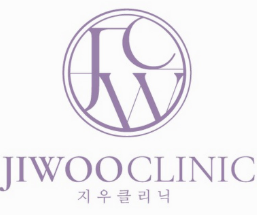LDM Facial in Korea for Sensitive Skin
What Is an LDM Facial?
LDM stands for “Localized Dynamic Micromassage” (or Local Dynamic Micromassage) — a non-invasive skincare treatment popular in Seoul that uses ultrasound energy at multiple frequencies (e.g., 1 MHz / 3 MHz / 10 MHz) to stimulate collagen and increase skin hydration, while avoiding aggressive laser or peel-type damage.
In practical terms, the facial:
- Applies an ultrasound-gel medium + the LDM handpiece over the skin.
- Could end with calming LED light, soothing mask, modeling pack.
- Has minimal downtime, mild sensations, and is often pitched for sensitive/irritable skin in clinic marketing.
Why LDM Works Particularly Well for Sensitive Skin
- The treatment is described by clinics in Korea as being “suitable for all skin types including dry skin, inelastic/inflamed skin, atopic skin.”
- It’s low-irritation: compared with strong lasers or aggressive peels, LDM focuses on enhancing the skin barrier, boosting moisture and collagen rather than injuring tissue.
- For those whose skin is prone to redness, irritation, or who avoid lasers because of risk of flare-up, LDM offers a gentler alternative.
What to Expect: Treatment Process & Sessions
- Upon arrival: skin consultation to check your skin type, sensitivity, any existing conditions.
- The session typically lasts around 10-30 minutes, depending on the mode chosen (e.g., “redness mode”, “lifting mode”, “sensitive skin mode”).
- Immediately after: You usually can wear make-up, no major downtime. Slight warmth or mild redness may occur.
- Recommended frequency: For sensitive skin or maintenance, many clinics suggest once weekly for a few weeks then maintenance every 2–3 months.
Typical Cost in Seoul (2025 Estimate)
- As part of “sensitive skin soothing facial” enhancements: e.g., LDM in Seoul clinics quoted at around ₩50,000-₩150,000 KRW per session.
- For example: a 12-minute LDM protocol at a clinic listed ₩59,000 KRW for the standard time.
- As a foreign patient, expect possible extra fees for English coordination or package add-ons (mask, serum, translator) — ask upfront.
Things You Should Ask & Consider Before Booking
Since your skin is sensitive, it’s especially important to clarify these points:
- Is my skin type (reactive, atopic, thin-barrier) suitable for LDM? Ensure the clinic knows you have “sensitive skin.”
- Which “mode” of LDM will you use (redness mode / sensitive skin mode) and why for my skin?
- What is the post-care instruction? For example: avoiding sauna/steam, strong exercise, harsh skincare for how many hours/days.
- What’s included in the quote? (Session length, mask, serum, translator, any follow-up check)
- Have you treated foreign patients with sensitive skin before? Do they have English reviews/testimonials?
- What are the expected improvements and when can I see them? For example: barrier stronger, less redness, better tone.
- What possible side-effects apply to sensitive skin? Even if rare, things like temporary flushing, mild itch. (Docs mention mild redness/itch for LDM. 여신티켓 시술백과 )
- Is there anything I should avoid after the treatment? Especially for sensitive skin: strong skincare actives, hot baths, sun exposure.
After-Treatment Care (Especially for Sensitive Skin)
- Use gentle, fragrance-free moisturizer and calming serums as recommended by clinic.
- Strict sun protection: sensitive skin is more vulnerable to UV-triggered irritation.
- Avoid heavy exfoliation, strong acids or retinoids for a few days post-treatment.
- Avoid hot saunas, steam rooms, heavy sweating for 1–2 days (some clinics advise 3–4).
- Keep skin clean, avoid touching/rubbing the face, use mild cleanser.
- Monitor for any unusual prolonging redness or stinging — if present, contact the clinic.
Final Thoughts
If you have sensitive skin and want to treat tone, hydration, redness, or mild texture issues without aggressive procedures, visiting a Seoul clinic for an LDM facial is a very good option. It’s gentle, low-downtime, and many clinics explicitly say they tailor it for sensitive and reactive skin types.
When traveling for the treatment, make sure you choose a clinic that:
- Offers English-language support
- Understands and addresses sensitive skin specifically
- Provides clear after-care instructions
- Gives a transparent quote and treatment plan



